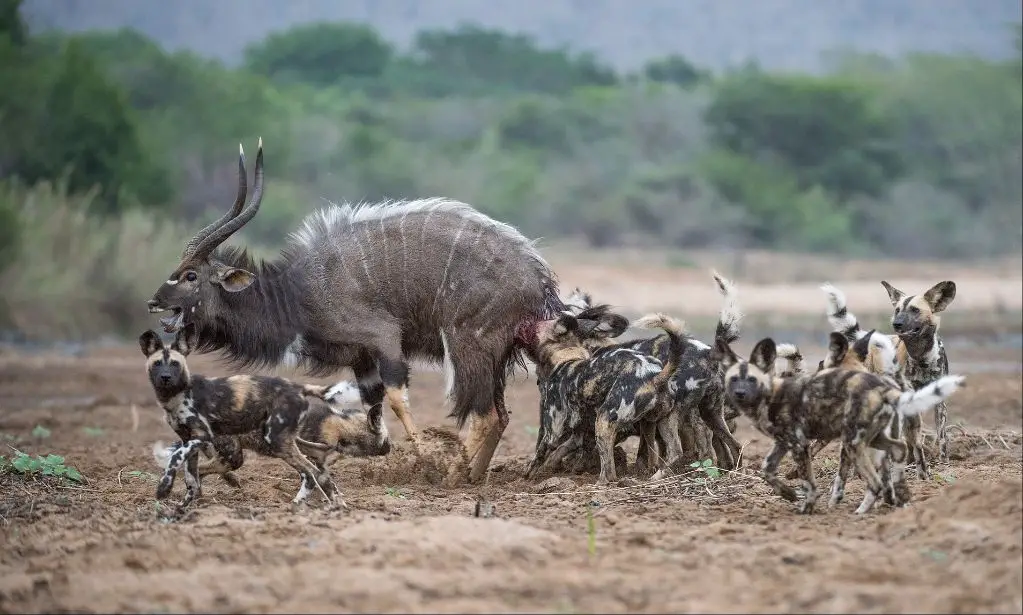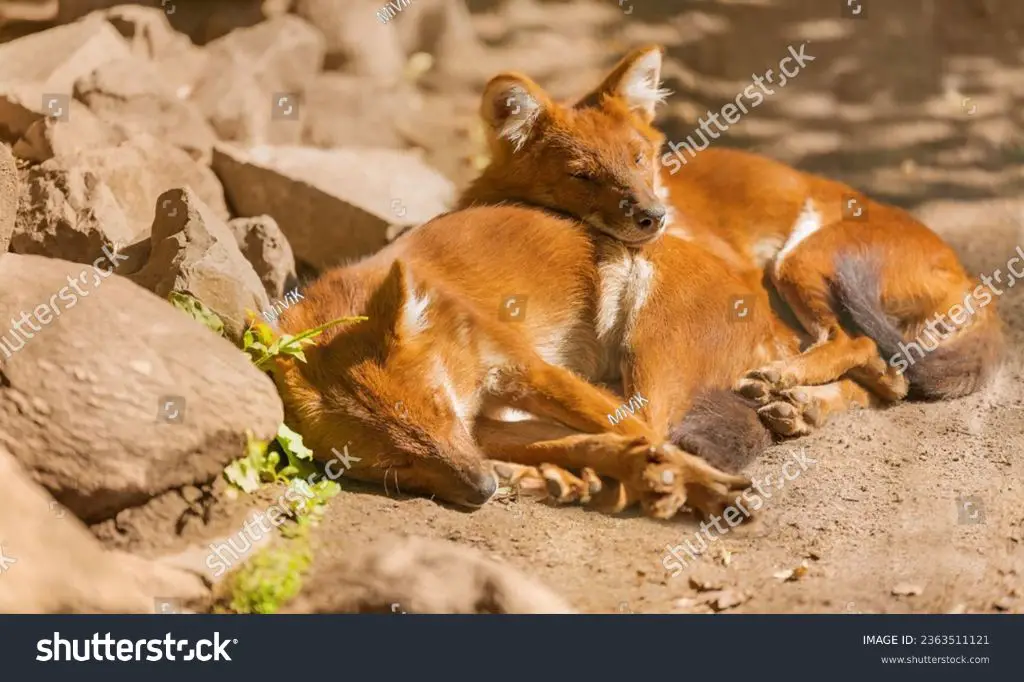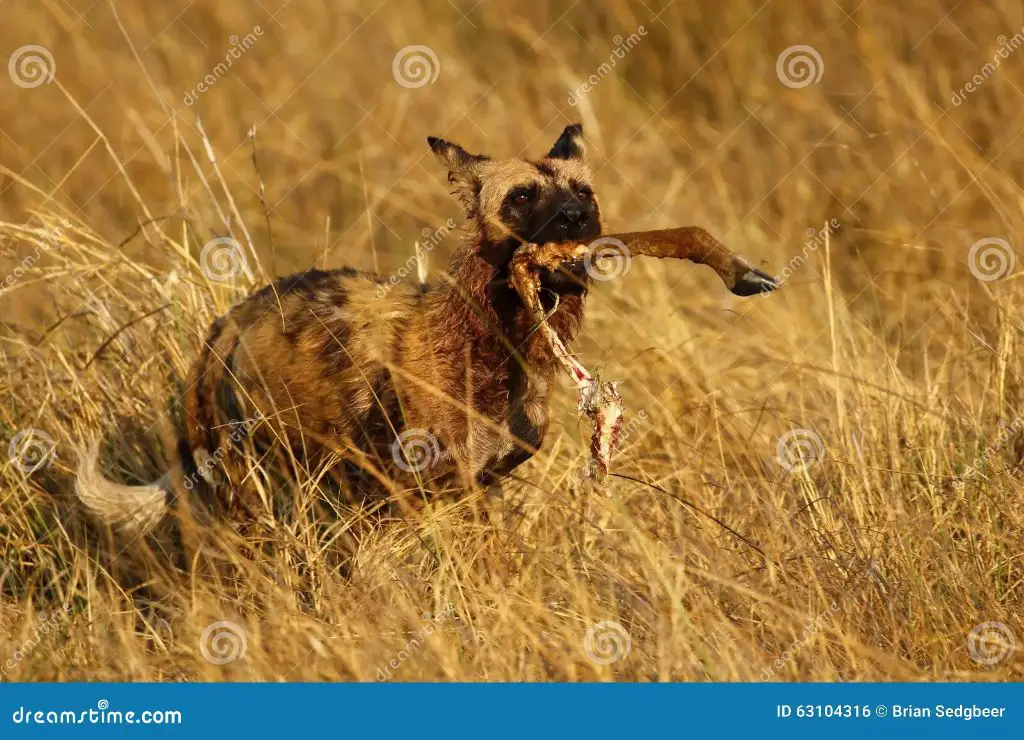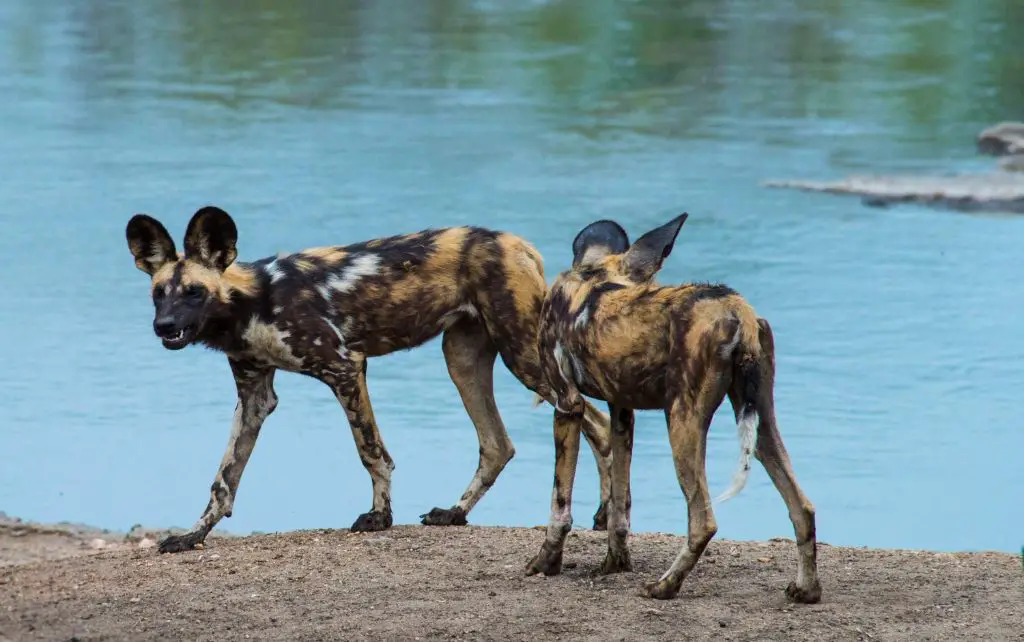Defining ‘Wild Dogs’
The term “wild dogs” refers to canine species that live freely in nature without being domesticated by humans. Some of the most well-known types of wild canines include wolves, coyotes, foxes, jackals, and dingoes.
Wolves are the largest wild canine, living in packs and hunting large prey like deer and elk. They are found in wilderness areas of North America, Europe, and Asia. Coyotes are a mid-sized wild canine native to North and Central America known for their adaptability and opportunistic hunting and eating habits. Foxes are smaller wild canines found on every continent except Antarctica and known for their long muzzle, bushy tail, and cat-like hunting abilities.
Other wild canines include jackals like the golden jackal in Africa, Asia and Europe and the black-backed jackal in Africa. Dingoes are a wild dog native to Australia that resembles domesticated dogs in appearance. There are also rare or endangered wild canines like the Ethiopian wolf, Darwin’s fox, and African wild dog.
(Sources: https://quinnsartbooth.gumroad.com/l/FJjnx, https://www.shawlocal.com/2015/01/31/good-natured-coyote-fox-or-dog-follow-the-tracks/aqj53cn/)
Well-Known Wild Dog Species
Some of the most well-known wild dog species include:

The African wild dog (Lycaon pictus) is native to sub-Saharan Africa. They are social animals that live and hunt in packs. African wild dogs are endangered with only about 6,600 adults left in the wild (https://medium.com/@berozghar/wilddog-b015ff8ba383).
The dingo (Canis dingo) is native to Australia. They are an iconic part of the Australian landscape and play an important ecological role, especially in arid regions. There are estimated to be over 250,000 pure dingoes left in Australia (https://animalss.info/web-stories/wild-dog-facts/).
The New Guinea singing dog (Canis hallstromi) is native to the highlands of New Guinea. They get their name from their unique vocalizations. Singing dogs are extremely rare in the wild and are considered critically endangered.
Wild Dogs Around the World
Wild dogs inhabit a wide range of habitats across the world, including grasslands, savannas, woodlands, and even deserts [1][source: https://www.activewild.com/wild-dog-species-list/]. Some of the key regions where various wild dog species are found include:
Africa: Several wild dog species are native to Africa, most notably the African wild dog which was once widespread but now primarily found in southern and East Africa. African wild dogs inhabit grasslands, savannas, and woodlands across sub-Saharan Africa [2][source: https://www.worldwildlife.org/species/african-wild-dog].
Asia: Wild dogs like the dhole and the African wild dog are found across parts of Asia. Dholes inhabit grasslands, forests, and scrubs lands from eastern India to southeast Asia. [3][source: https://en.wikipedia.org/wiki/African_wild_dog]

North America: Only two wild dog species inhabit North America – the red wolf found in the southeastern United States and the coyote found throughout much of North America.
South America: The maned wolf is native to grasslands and scrub forest habitats in central South America.
Wild Dog Habitats
Wild dogs can adapt to a variety of habitats across Africa, Asia, and North America, including forests, grasslands, deserts, and more. Some of their key habitat requirements are adequate prey availability, sufficient cover, and relatively low competition from larger carnivores like lions and hyenas (PBS, 2023).
Forests like those found across sub-Saharan Africa provide ideal habitat for wild dogs due to the abundance of prey species such as antelope. Forested areas with clearing and transitional zones into grassland are especially suitable. The African wild dogs of Tanzania’s Selous Game Reserve are one example of a thriving forest-dwelling population (Classicsafariafrica.com, 2019).
Savannas and grasslands are another key habitat, providing open terrain ideal for pursuing fast prey. Grassland-dwelling wild dogs in Zimbabwe’s Hwange National Park have expanded their range into surrounding agro-pastoral lands outside the park. While providing additional habitat, these unprotected lands also increase exposure to humans and domestic animals.
Even arid deserts and scrublands can support wild dog populations, like the endangered dholes of India’s Thar Desert. Their ability to adapt to these dry habitats depends on the availability of prey species, sufficient vegetation and cover, and access to water sources.
Wild Dog Diet
Wild dogs are opportunistic predators that hunt a variety of prey species. Their diet consists primarily of large ungulates such as antelope, gazelles, wildebeest calves, warthogs, and zebras. They will also hunt smaller prey like hares, rodents, and birds when larger game is unavailable. Packs of wild dogs are capable of taking down prey up to 10 times their size through coordinated hunting techniques.

In addition to live prey, wild dogs will scavenge carcasses left behind by other predators. Scavenged meat makes up over one-third of their diet in certain areas. They use their highly developed sense of smell to locate carrion from several miles away.
Wild dogs require up to 7 pounds of meat per day to survive. Since they hunt in packs, they are able to consume most of a kill within 30 minutes. Very little goes to waste as wild dogs can eat up to 25% of their own body weight in a single meal.
According to https://www.earthreminder.com/what-do-wild-dogs-eat/, the diet of wild dogs consists of about 90% meat and 10% non-meat foods. The non-meat portion includes fruits, berries, tubers, and greens that provide fiber and key nutrients.
Wild Dog Social Behavior
Wild dogs are highly social animals that live together in packs. Packs typically consist of 6-20 members including the dominant breeding pair, subordinates, and pups (Social Behavior and Structure in Wild and Captive Groups). The pack functions as a stable social unit with complex behaviors and social norms.
There is usually only one breeding pair in a pack. The dominant male and female mate, and after a gestation period of around 70 days the female gives birth to a litter of 2-20 pups. All members of the pack help care for and feed the pups. Wild dog pups are allowed to eat first at kills before the adults (Wild Dog Facts).
The pups are raised communally by the entire pack. Pack members will even regurgitate meat for pregnant and nursing mothers and pups. Wild dogs have strong social bonds and a hierarchical pack structure that reinforces cooperation in caring for young.
Relationship with Humans
Humans and wild dogs have had a complex relationship over history. In ancient times, wild dogs and humans often worked together for hunting and protection. Humans would provide food and shelter to wild dogs, while the dogs would help track prey and alert humans to danger. Some cultures even kept wild dogs as beloved pets. However, as human settlements expanded, conflicts arose between wild dogs and humans over livestock predation and land use. This led to large-scale efforts to exterminate wild dogs and eliminate them as threats to human interests. Today, most remaining wild dog populations face significant threats from habitat loss and fragmentation, decline of prey populations, conflicts with humans, and diseases spread from domestic dogs. Conservation efforts now focus on protecting key habitats, managing wild dog-human conflicts through education and non-lethal control methods, vaccinating wild dogs against diseases, and monitoring populations.
According to this source, wild dogs and humans used to team up for hunting and safety long ago. Some cultures even kept wild dogs as pets due to their close bond. However, as explained by this article, the spread of human settlements led to conflicts over livestock predation and land use, causing efforts to eliminate wild dogs. Today, conservationists aim to protect wild dogs through habitat preservation, conflict mitigation, disease control, and monitoring.
Wild Dog Population Status
Wild dogs are considered an endangered species overall, though some populations remain more stable than others. The African wild dog population has declined dramatically, with current estimates at around 6,600 adults and 1,400 packs across Africa (Source). This represents a significant drop from historical numbers. Their range has contracted to only about 10% of Africa today. However, more stable populations exist in southern Africa and parts of East Africa like Tanzania and Kenya.
Research has found concerning declines in wild dog populations in certain areas, while other populations remain more robust. Overall, habitat loss, conflict with humans, and disease transmission from domestic dogs remain the biggest threats to most wild dog populations globally. Their endangered status underscores the need for ongoing conservation efforts to preserve remaining populations and habitat.
Threats to Wild Dogs
Wild dogs face several major threats that have contributed to their endangered status. The most significant threats are:
Habitat Loss
Loss of habitat is one of the biggest threats to wild dog populations. As humans clear land for agriculture, settlements, and development, wild dogs lose the grasslands and savannas they rely on for hunting and raising pups. Habitat loss also fragments populations, making it harder for packs to find mates and resources (Asilia Africa, 2022).
Hunting
Wild dogs are often killed by farmers and ranchers to protect livestock. They are also popular game trophies, and excessive sport hunting has decimated populations in some areas (Wilderness Safaris, 2021).
Disease
Diseases like rabies and canine distemper spread quickly among wild dog packs and can decimate local populations. Their small, isolated status makes them very vulnerable to outbreaks (Wilderness Safaris, 2021).
Wild Dog Conservation
Conservation efforts are critical for protecting wild dog populations that have declined significantly. According to the WWF, the African wild dog population has dropped from 500,000 to about 5,000-6,000. Habitat loss and fragmentation, conflict with humans, and disease transmission from domestic dogs have all contributed to the rapid decline.
There are several notable conservation success stories that provide hope for wild dog recovery. In Namibia, WWF has worked with local communities to monitor and protect wild dog packs in areas where livestock farming and wildlife overlap. Their efforts have helped reduce retaliatory killings of wild dogs by farmers and increase tolerance. WWF also assisted with the reintroduction of wild dogs to Mozambique’s Gorongosa National Park where the population has grown from 8 to over 100 since 2002.

The African Wild Dog Conservancy focuses on community-based conservation programs that provide economic incentives for local people to protect wild dogs. By supporting sustainable livelihoods, they aim to make wild dog conservation a priority. The Fauna & Flora International also partners with communities surrounding South Sudan’s Southern National Park to preserve habitat and stop poaching of wild dogs through education and capacity building.
